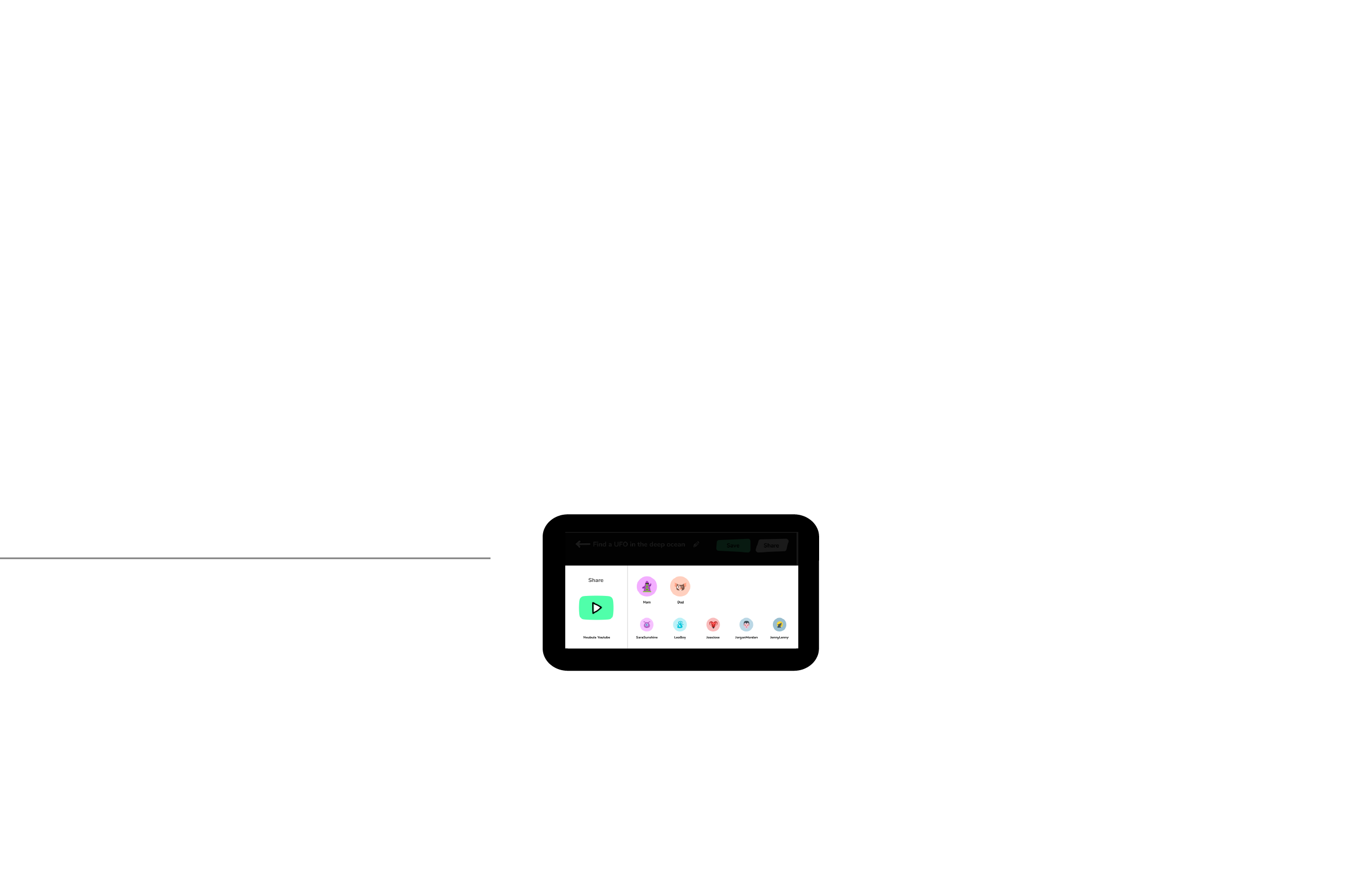
Google Nebula was a collaboration with Sara Ferris and Jiacheng Yang during a Google sponsored studio at Art Center College of design.
The prompt was to design tools for creators in the year 2025 using AR and VR.

Nebula allows any physical toy or object to act as a controller for things in a digital space.
Kids between the ages of 4 and 8 naturally use common objects to imagine and create stories. Nebula builds on this natural trait to create a new digital experience utilizing physical objects.
USER FLOW: SETTING UP A SCENE AND A TOY

Nebula allows any physical toy or object to act as a controller for things in a digital space.
Kids between the ages of 4 and 8 naturally use common objects to imagine and create stories. Nebula builds on this natural trait to create a new digital experience utilizing physical objects.
USER FLOW: SETTING UP A SCENE AND A TOY


Conductive fabric enables movement through the digital environment
SYSTEM DIAGRAM

PRODUCT SKEMATIC

USER FLOW: CREATING AND SHARING A STORY

Nebula YouTube curates public content that was created using the Nebula mat
PROCESS
We started by making an audit of upcoming tech and experimenting with newer technology that is available in the market.



We found the a tracking physical objects in a digital space to be a very rewarding and unique experience.



After ideation and deciding on a concept, we explored the relationship between the phone and television screen using paper prototypes


User Testing

We conducted two sessions of user testing with a 8 and 12 year old child
Key Insights
When discovering ability to edit scene with voice kids can ask for outrageous commands. Our interface had to slow down that flow enough to not over load the processor but also maintain the users' interest
Users quickly expect mat to be able to track any object and will start grabbing things to see what they can do on the screen.
Mat has to be strong enough to hold during aggressive swiping yet soft enough to invite that interaction













